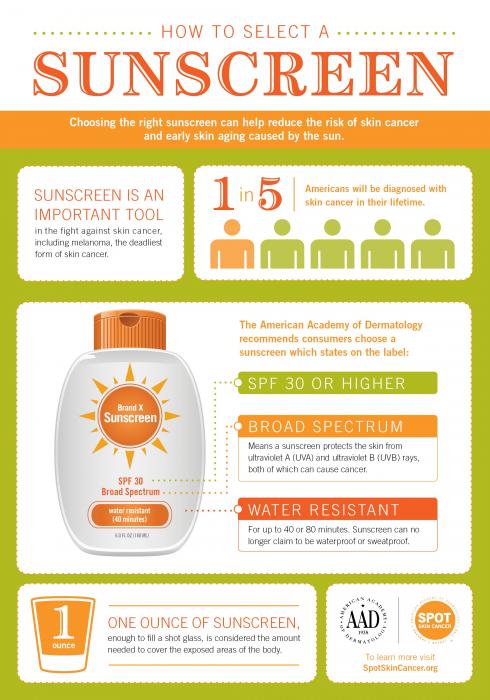Prevent Skin Cancer With Sunscreen Use
Skin cancer occurs more often than all other types of cancer combined. There are three common types of skin cancer. The most common type, basal cell carcinoma, will be diagnosed in Americans 2-3 million times in 2013. The second is squamous cell carcinoma, which will occur 250,000-500,000 times in this country this year. The least common but most serious type of skin cancer is malignant melanoma. Approximately 80,000 new cases will be identified in the U.S. in 2013, resulting in around 9,000 deaths.
“No doubt these are alarming statistics, but skin cancer is preventable,” said Dr. David Shupp, dermatologist at Penn State Hershey Medical Group in State College, Pa. “The overwhelming majority of all types of skin cancer are caused by ultraviolet radiation, invisible rays that are emitted by the sun and tanning beds. UV rays have been proven to be as cancer-producing as cigarette smoke and nuclear radiation.”
Detection of skin cancer starts with having some idea what to look for on your skin. This includes watching for a new red or pearly spot (especially on scalp, face, ears, neck and hands) that does not heal or go away and may bleed or be tender to the touch.
Tips for preventing skin cancer:
- Sun protection and strict avoidance of tanning bed use are essential. Recent data reveals a 20 percent increase in the risk of developing melanoma with just one visit to a tanning bed. Sunburns, especially with blisters, also are damaging and dramatically increase the risk of skin cancer.
- Sunscreen should be applied to all exposed skin before going out in the sun and should be reapplied every several hours, especially if the skin becomes wet from swimming or sweating.
- Sunscreen should be labeled as broad spectrum and possess a sun protection factor (SPF) of 30 or higher.
- Wear protective clothing and seek shade when in bright sunshine.
- If possible, adjust outside activities to minimize time spent outdoors during the intense sun of mid-day.

Choose the right sunscreen to prevent sunburn and skin cancer. (Source: American Academy of Dermatology)
“Contrary to what some believe, sunscreen will not increase the risk of skin cancer,” said Shupp. “However, improper use of sunscreen, such as not applying enough or failure to reapply, may lead to a false sense of security and cause additional damage to those exposed to the sun.”
SPF ratings are based on minimal erythema dosing (MED). This refers to the minimal amount of sunlight causing redness of the skin, a clear sign of early sunburn. SPF numbers represent the multiple of the MED. In other words, an SPF of 30 increases the time or amount of sunlight that would induce a sunburn by a factor of 30. For example, if a fair-skinned individual starts to burn after 10 minutes of sun exposure, SPF 30 sunscreen would protect his or her skin for 30 times 10 minutes, or 300 minutes.
Article by Penn State Milton S. Hershey Medical Center

This article was written by the guest author listed at the end of the article.




